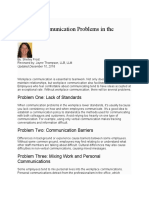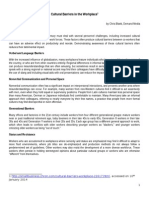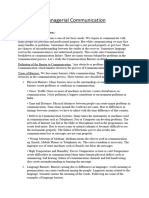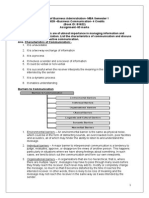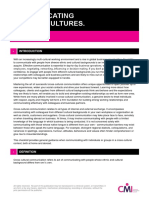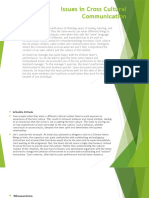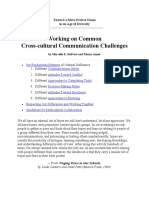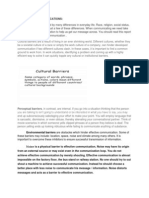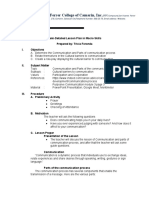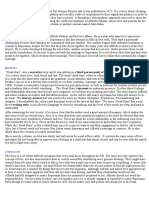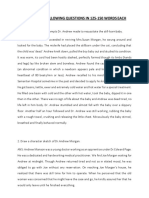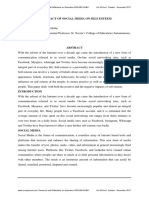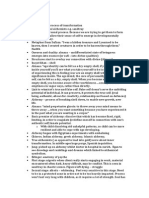1|Page
MODULE
03
Cultural Barriers to
Communication
I. Objective/s
1.Identify the cultural barriers of
communication.
II. Overview
In the multicultural workplace typical of doing business in a global economy, cultural
barriers to communication abound. Besides the obvious difficulty in understanding
people whose language is different, there are other factors that challenge people who
are trying to work harmoniously with others of a different background. People from
different parts of the world have a different frame of reference, and they may display
emotions differently and display different behaviors.
2|Page
� III. Things to Ponder
Cultural Barriers to Communication
1. Language Barriers Language is a very complex thing, and communication
between people speaking different languages is difficult. Language is a way of
looking at the world, and even skilled translators can find it tricky to convey
complex emotions and concepts, which can lead to misunderstandings. When
you think about how often you misunderstand someone speaking your
language, you can imagine how hard it is to get the full meaning from something
a person with a different cultural background is saying to you.
2. Hostile Stereotypes Inaccurate and hostile stereotypes of people from other
places can be a barrier to communication in the workplace. Stereotypes are
assumptions people make about the traits of members of a group. For example,
a stereotypical American is thought to be impatient and arrogant as well as
friendly and tolerant. The danger is entertaining stereotypes is that an individual
is thought to possess characteristics that are ascribed to the group. Obviously,
not all Americans are impatient and arrogant, nor are they all friendly and
tolerant. Prejudging an individual can lead to misconceptions and barriers to
communication.
3. Behavior Differences Behavioral differences between employees of different
cultures can cause misunderstandings. Every culture has guidelines about what
is considered appropriate behavior. In some cultures, looking someone in the
eye when they are talking to you is considered rude, while in other cultures
refraining from doing so is considered disrespectful. Getting right to the point at
a business meeting may be considered impolite by some, who expect to have"
small talk" before the business discussion. Likewise, in some cultures, people
talking to each other give each other space, while in other cultures, they stand
close. These differences can be barriers to effective communication if they are
not recognized.
4. Emotional Display What is considered an appropriate display of emotion can
differ from culture to culture. In some countries, displaying anger, fear or
frustration in the workplace is considered inappropriate in a business setting.
People from these cultures keep their emotions hidden and only discuss the
factual aspects of the situation. In other cultures, participants in a discussion are
3|Page
� expected to reveal their emotions. You can imagine what misunderstandings
can arise if a businessperson displays strong emotion in the company of
employees who feel that such behavior is out of place.
IV. Check this Out!
Invitation for people to join cause oriented events using
various media such as email,social media,print or electronic
advertisement.
4|Page
�V. Reflection
A. Thing/s I learned
_______________________________
_______________________________
_______________________________
B. Question/s in my Mind
_______________________________
_______________________________
_______________________________
C. Realization/s I got
_______________________________
_______________________________
_______________________________
5|Page








